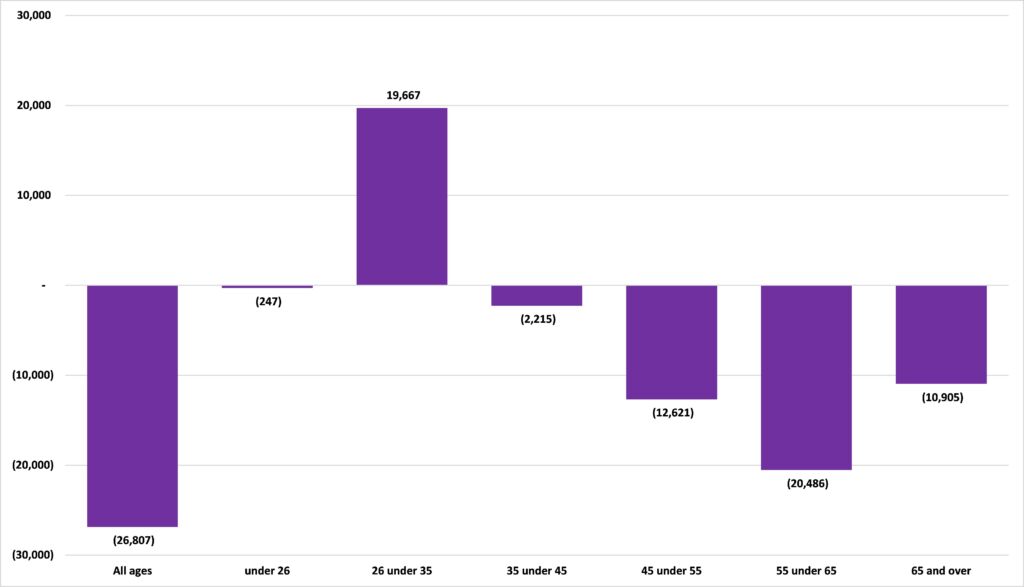Data show that Minnesota’s fleeing residents aren’t just retirees
In a couple of recent articles, I’ve noted that from mid-2021 to mid-2022, 19,400 Minnesota residents left for other states, by far the highest number in at least three decades and that Florida is the most popular destination for those Minnesotans fleeing our state.
A common response was something like “breaking news: old people are leaving frozen bad weather state for warm weather” or “We’re surprised that baby boomers are retiring to warm states?” In both cases, I asked what data they had on the ages of these domestic migrants. No answer came.
In fact, there is data available from the Internal Revenue Service on the ages of these domestic migrants and it refutes the argument that the exodus of Minnesotans to other states is driven solely by retirees or “Boomers.”
Table 1 and Figure 1 show Minnesota’s net domestic migration of individuals of different age groups over the last nine years, those for which this data is available. Overall Minnesota sees a 26,807 net loss of residents to other states. But contrary to the retirees and “Boomers” argument, our state sees this net loss of residents to other states across five of the six categories the IRS data breaks it down into, including those under 26.
True, the higher losses are in the older categories 55 under 65 and 45 under 55 — 65 and over ranks third out of five categories with a loss — but these categories — people aged between 45 and 65 — are in the prime of their working and earning years. These are not the Golden Girls or Grumpy Old Men.
Table 1: Minnesota’s net domestic migration by age group

Figure 1: Minnesota’s net domestic migration by age group, 2011-2012 to 2019-2020

Another point to note about this data is the sharp increase in domestic outmigration from Minnesota in 2019-2020, the last year for which the IRS has data. This matches the quickening pace of exit seen in the Census Bureau data. When the IRS releases its numbers for 2020-2021 and 2021-2022, we can expect to see that exodus again.